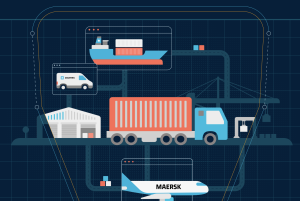 In a recent survey, 36% of respondents confirmed that there is a controlled process to manage change in their supply chains. The remaining 64% said their companies react to change either when required to respond to market needs or when they see little or no development potential in their supply chains.
In a recent survey, 36% of respondents confirmed that there is a controlled process to manage change in their supply chains. The remaining 64% said their companies react to change either when required to respond to market needs or when they see little or no development potential in their supply chains.
The results of the Barloworld Logistics Supplychainforesight 2015 survey suggest that there is a need to improve the current level of capability to anticipate change, respond to change and to create an environment that facilitates change.
In fact, survey responses indicate that companies’ current abilities to manage and implement change are symptoms of a short-term tactical focus, noted the survey report.
When asked how their companies perform in terms of critical elements of change management, 65% of respondents indicated that ‘diagnosing current position and need for change’ is well managed; 51% said ‘ensuring change is implemented and sustainable’ is well managed. Only 39% indicated that ‘communicate extensively throughout change’ is well managed, ranking it last in terms of well-managed change management elements. The need to communicate change is essential and, therefore, should play a bigger role in an organisation so that personnel clearly understand what is expected of them rather than forcing them to make assumptions.
Bringing about change is often paired with uncertainty around the future of an organisation, however, the survey results indicate that “in general there is a positive culture towards change in organisations”.
 Managing change requires a strategic plan and a clear background understanding of the change objective, reasons for its implementation and a strong process of communication within the organisation. “The function of change management in many organisations is a team established to implement pre-determined changes and invariably is not involved in the monitoring of the need for change or the vision of what needs to change and why. Managing change is an executive role requiring the support of all those affected by it”, noted the survey. This includes supply chain personnel, who also feel the burden of change and at times are faced with difficulties of not understanding how to implement or react to certain changes made within the organisation, specifically if communication had not been clear. Personnel need training regarding changes made within the organisation in order for them to practise their supply chain skills well.
Managing change requires a strategic plan and a clear background understanding of the change objective, reasons for its implementation and a strong process of communication within the organisation. “The function of change management in many organisations is a team established to implement pre-determined changes and invariably is not involved in the monitoring of the need for change or the vision of what needs to change and why. Managing change is an executive role requiring the support of all those affected by it”, noted the survey. This includes supply chain personnel, who also feel the burden of change and at times are faced with difficulties of not understanding how to implement or react to certain changes made within the organisation, specifically if communication had not been clear. Personnel need training regarding changes made within the organisation in order for them to practise their supply chain skills well.
If change management strategy is not communicated well, personnel are unlikely to meet objectives, which will result in bad feedback. This is where the need for enhanced visionary and change management skills may be required, noted the survey report.
Meanwhile, technology continues playing a vital role in connecting businesses: 75% of survey respondents welcomed information communication technology improving their way of doing business and delivering better value. Through technology data is easily exchanged and makes it simpler for businesses and supply chains to target their customers and improve their market positions.
In conclusion, the responses to the survey questions indicate that whilst there is recognition of the importance and extent of change affecting business processes, methods, products and services, there is a perceived shortcoming in the ability to anticipate such changes.
Organisations need to embrace change to ensure a sustainable future for their supply chains.
Images courtesy of the Barloworld Logistics Supplychainforesight 2015 report


























